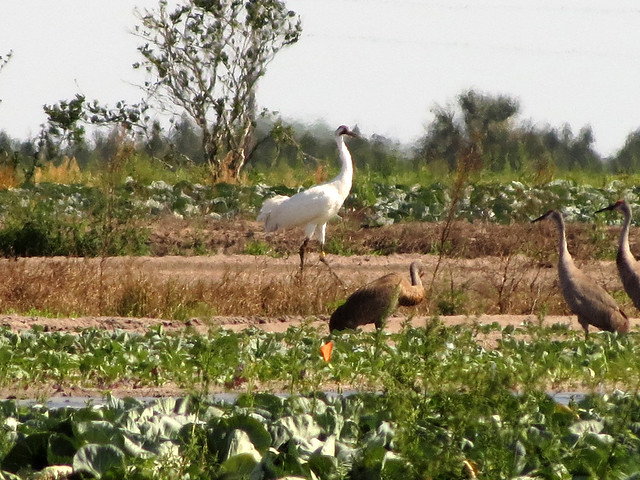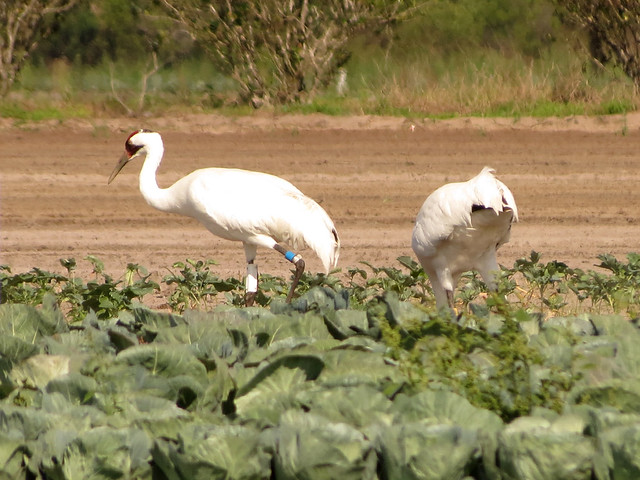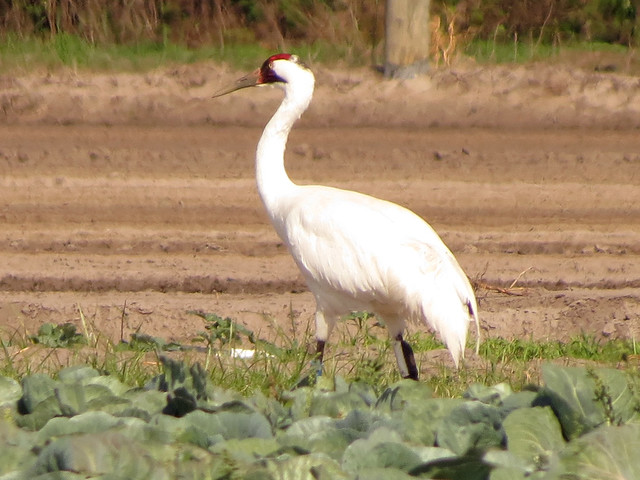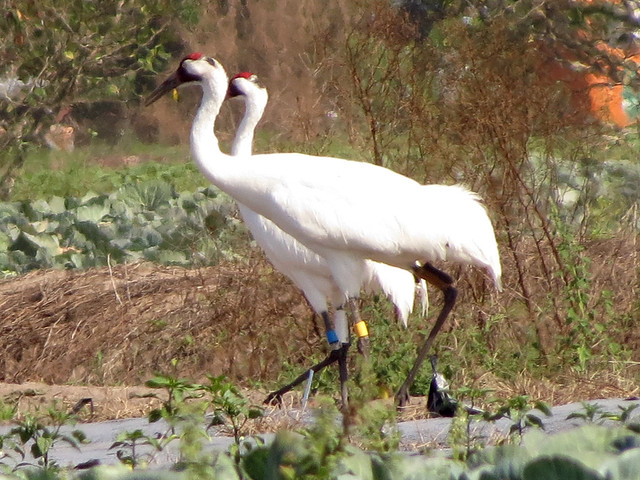Efforts to save the highly endangered Whooping Crane included the attempted establishment of a non-migratory population in central Florida. Since this effort was deemed unsustainable due to high mortality and low reproduction, the flock today is down to just 20 birds from 53 individuals in 2006.
The birds are still being monitored, however, and last year camera traps were set up to study nest sites. One nest site is also being monitored by a data logger, which measures temperature change and other data.
Birds from the Florida non-migratory population are spotted by birders fairly regularly, so when a pair was reportedly seen on a farm field in nearby Lake County, Florida, Arthur and I drove out to see if we could find them. They were hanging out close to a flock of Sandhill Cranes and very easy to find. We kept a respectful distance and observed them, using our car as a hide.



Distortion from heat shimmer was intense – this photo has not been filtered

Whooping Cranes sightings should be reported. Birds seen in the eastern United States can be reported to USFWS using this form. Based on the band colors these birds are wearing, we knew they were part of the non-migratory population. Migrant Whooping Cranes are also found in Florida during the winter, and those sightings should certainly always be reported to USFWS. Although we are grateful to be able to see these birds after their location was mentioned on a public mailing list, we believe that all sightings of Whooping Cranes in the wild should be shared with extreme discretion.






